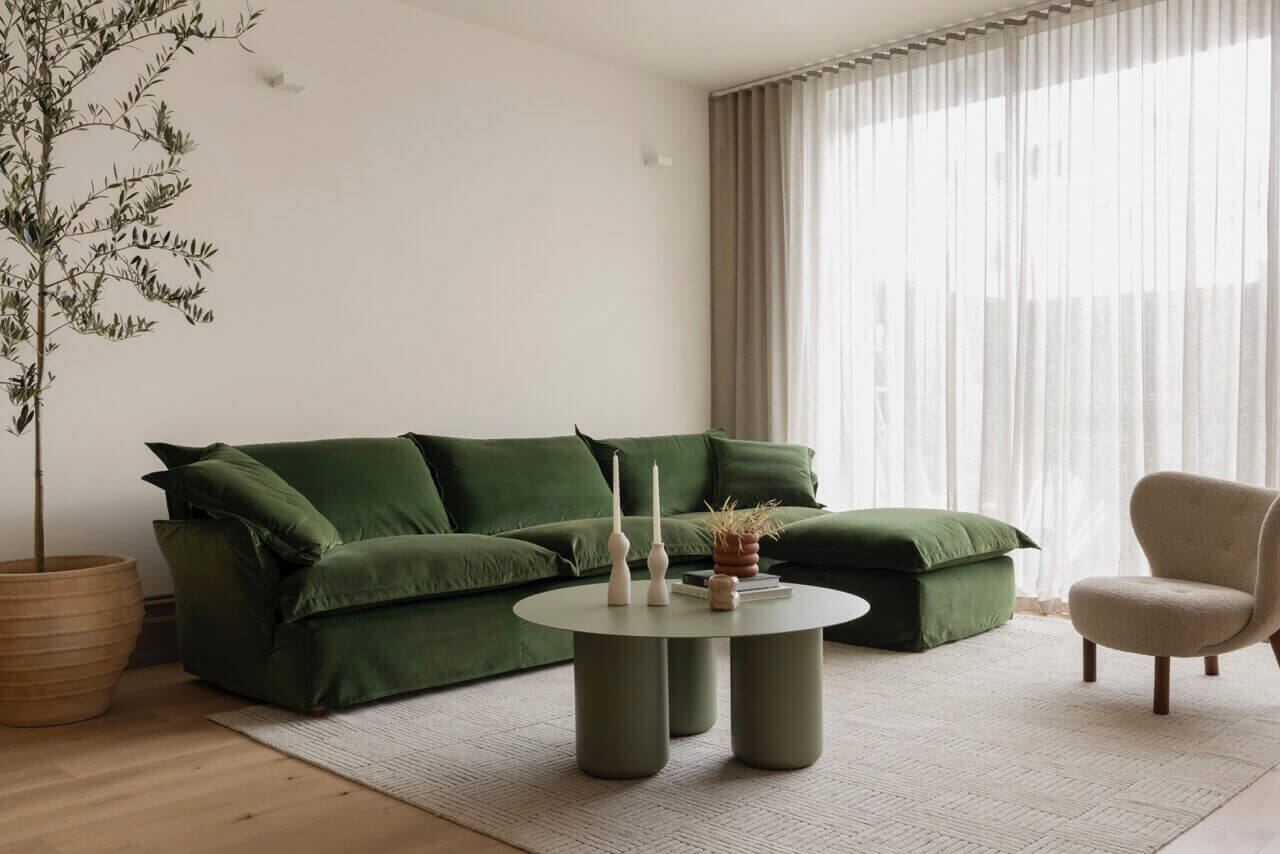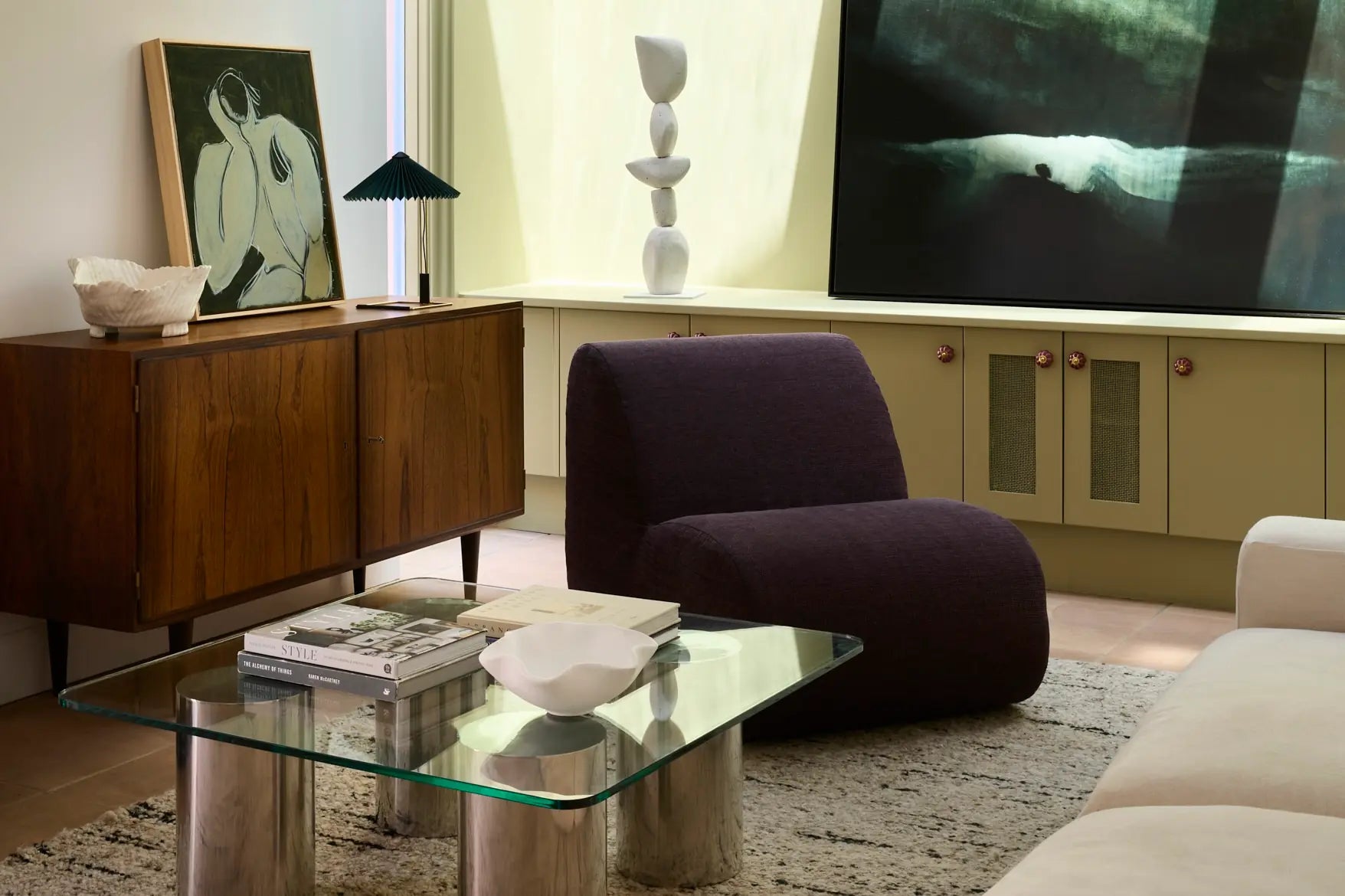While Bennifer and Brangelina didn’t exactly do wonders for instilling confidence in blended named couples, we think Japandi (a blend of Japanese and Scandi) is a match made in design heaven.
Our experts at FURNISHD. are here to let you in on exactly what this style trend is, and how you can create a Japandi haven in your own home.
Japandi what now?
Ok, first things first. What is Japandi, exactly? And why do we love it even more than our morning double-shot latte?
In a nutshell, Japandi combines the sleek elegance of the Japanese aesthetic, with the simple functionality of Scandi.
This hybrid style trend is based on functional, minimalist spaces that flow, created with clear intention and thoughtful execution.
It also marries Hygge, the Scandi notion of creating cosy, comfortable spaces, with Wabi-sabi, the Japanese idea that beauty is to be found in imperfection. And it works.
The contrast creates textural, calming and beautiful sanctuary-like retreats.
Set your intention for the space
We know this sounds a bit woo-woo, but stay with us.
Japandi is based on intentional design – everything has a purpose, and anything extraneous is left out.
So, whichever room is set in your sights for a good Japandi-ing, your first job is to consider your intention for the space.
What will the room be used for? What does it need in it for it to be able to serve that purpose? And, more importantly, what does it not need?
"This hybrid style trend is based on functional, minimalist spaces that flow, created with clear intention and thoughtful execution."
Out with the old, and in with the purposeful
This is where the minimalism portion of the program begins. If you want a calming Japandi space in your home, you’ll have to close your eyes and channel your inner Marie Kondo first.
Turf or re-home anything that doesn’t play nicely with the intention you’ve set for the space.
Stop side-eyeing the fossilising treadmill in the study and ditch it.
Donate all the old toys. And please, for the love of streaming, get rid of that DVD collection.
The goal isn’t to create a barren, where-the-hell-is-everything look, but if you’re not going to use it in the space that it’s in, it needs to be shown the door.
Go with the flow
Flow isn’t just for rivers and rappers, it’s a huge consideration for interior design too.
Japandi, in particular, depends on it. Both Scandi and Japanese styling are all about creating easy-to-use spaces, so allowing a free-flow of movement, air and light is key to getting it right.
Think about how you’ll arrange the furniture so that the room is easy to move through and enjoys maximum natural light, while still serving the intention of the room.
Mix it up with a furniture combo that sings (in perfect harmony)
The furniture in a Japandi space should create harmonious contrast without overcrowding the room, while still making sure everything is (yep, we’re going to say the f-word again), functional.
Scandi pieces are usually constructed from pale wood in clean lines, and have a simple, unpretentious vibe.
Japanese furniture, on the other hand, is generally made from stained or painted wood in darker colours, and is elegantly curved and more dramatically shaped.
Select a combination of these two styles that works for the purpose of the room, and voila – you’re halfway to Japandi.
Curved, black chairs around a simple, pale wood table will give you the bones of a Japandi dining room.
A Scandi bed with dark lacquered side tables will bring Japandi into the bedroom.
If you don’t have loads of room, using low-profile furniture typical in Japanese styling gives a sense of spaciousness by freeing up the vertical space in the room.
The theory goes that it’s also quite grounding to be closer to the earth, so low-profile furniture can also add to the calm ambience of the room.
Accessories are for function, not just fashion (darling)
Broken record alert: function is key, so the accessories you choose each need to have a purpose – being pretty isn’t enough to get you through the door.
Select Scandi accessories to create comfort.
We’re talking plumped up cushions, snug blankets, scented candles, and rub-your-feet-on-me rugs.
Then, introduce the Japanese influence with useful items like vases, books, screens and lighting.
Natural materials are where it’s at for Japandi styling, with both Japanese and Scandi design leaning heavily on a strong connection to nature and the outdoors.
Go for a terracotta pot, a paper light shade or cushions made from raw linen.
Using natural materials also lets you get your Wabi-sabi on, as their beauty lies in their imperfections.
Your goal when accessorising your Japandi space is to mindfully curate a selection of pieces, rather than stuffing the room full of beautiful things.
This is not a song about rainbows
Japandi styling is anchored by calming neutral colours.
Anything bright and cheery will throw the balance off, so if you haven’t already regifted that flamingo cushion cover from last year’s Kris Kringle, now would be a good time.
The rich, earthy colours of Japanese styling warm up Scandi’s traditionally cool, neutral palette.
A base of warm white with contrasting earthy tones and accents of black is a foolproof recipe.
Choose three or four shades only to reflect the refined simplicity of the style.
Overall, you’re going for a look of restrained contrast, but if you’re a bit more adventurous, throw in some accents of Scandi-inspired pastels, or some deep Japanese indigo.
Green is the new black
We’ve sung the praises of indoor plants before and in a Japandi room, adding a plant or two complements the use of natural materials, and serves to deepen its connection to nature.
We’re not going all crazy plant lady though – a couple will be enough.
An alternative to plants is to include a branch somewhere in your styling or to open your space up to the garden to blur the line between the inside and outside.
Well – that should give you something to go on with! If you’ve fallen in love with Japandi and need some expert help (read: you want someone to do it for you because now that you’ve read about it, it seems like a lot of work) the FURNISHD. The team is here to help!


